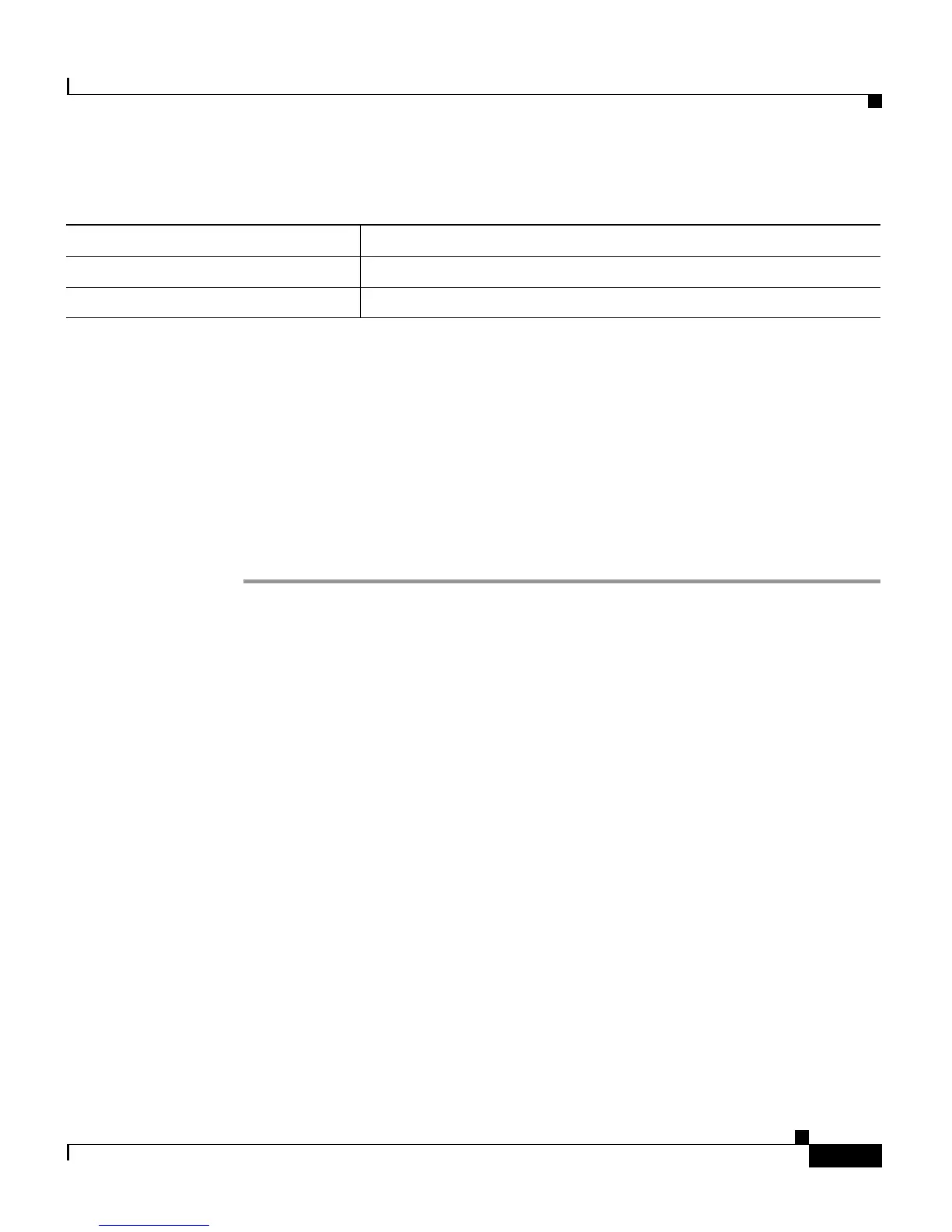10-5
Cisco Customer Response Solutions Administration Guide, Release 4.1(1)
Chapter 10 Managing Cisco CRS Historical Reporting
Purging Historical Data
The User configuration for user area opens displaying the following fields.
Step 5 In the Installed Reporting Packages list, choose the reporting package for which
you want to configure this user, and click >.
Step 6 If you want to remove reporting packages from this user, choose the reporting
package that you want to remove in the Selected Reporting Packages list, and
click < .
Step 7 Click Update to apply the changes.
The User Configuration area opens.
Step 8 Repeat steps 3 through 7 to configure additional users.
Purging Historical Data
As the Cisco CRS Engine runs, it collects information about the status and
performance of the CRS system. Historical information is stored in a database that
can then be accessed to provide reports (see the Cisco Customer Response
Solutions Historical Reports User Guide for more information about Cisco CRS
Historical Reports).
When the database approaches its maximum size, some or all of the data in it must
be removed. Removing data from a database is called purging.
When the system purges data, it removes data from the db_cra database. It
determines what information to purge based on the number of months you specify
and on the current date. For example, if you instruct the system to purge data older
than 12 months, a purge on January 15 will purge data older than January 15 of
the previous year.
Field Description
Installed Reporting Package All installed reporting packages available for this CRS system.
Selected Reporting Package All reporting packages that are selected for this user.

